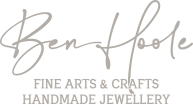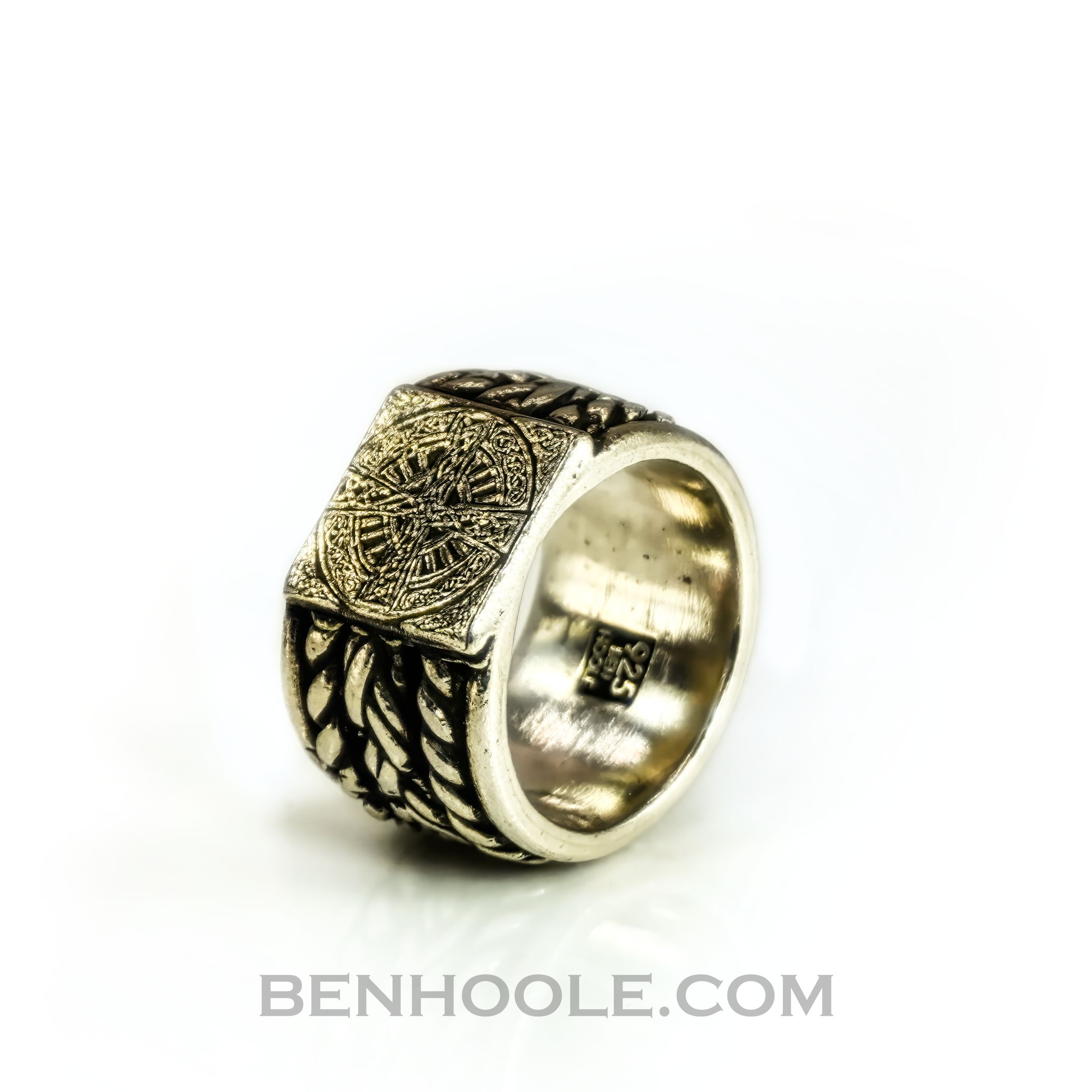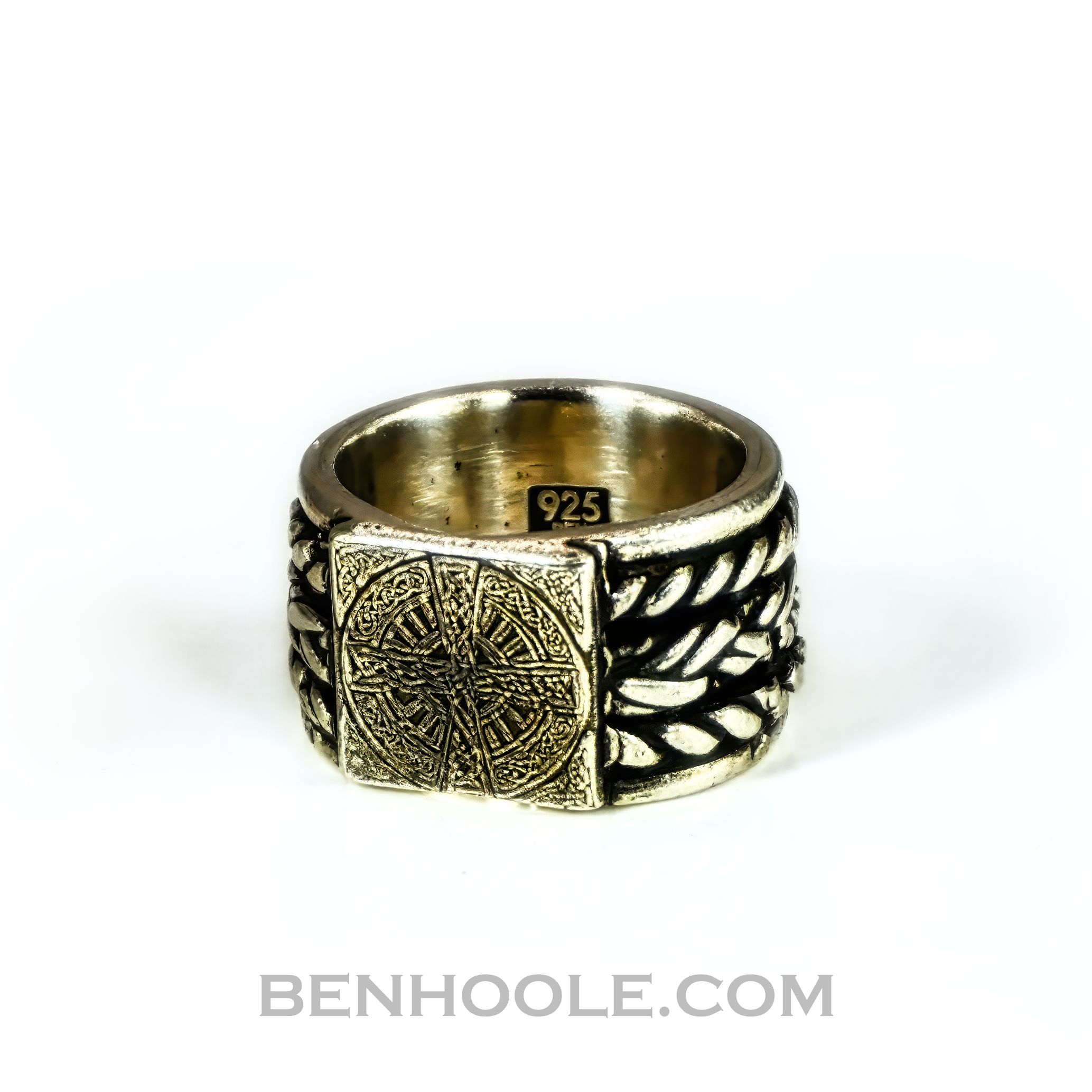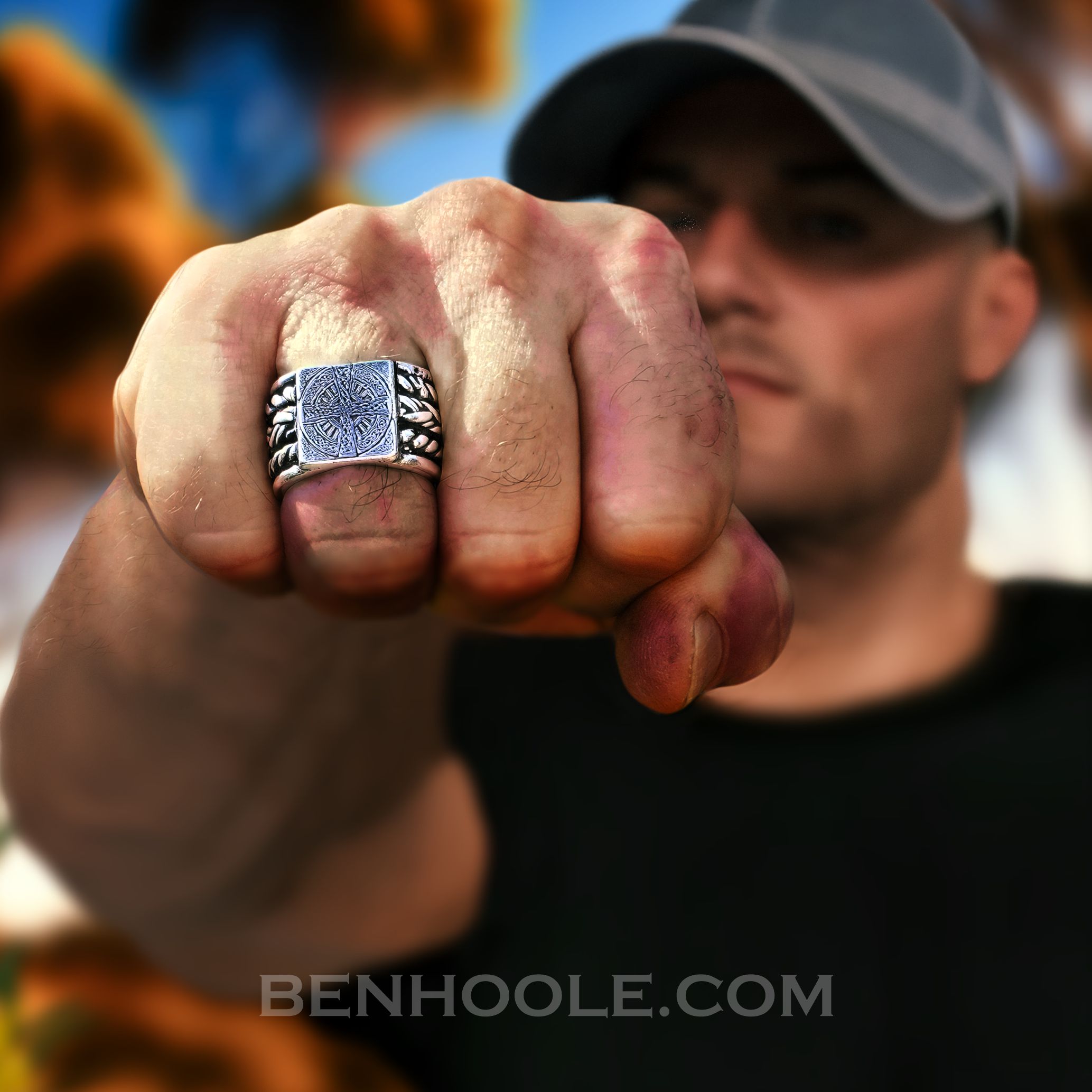SIZE X (Please see sizing guide below).
At a little over 28 grams, this sterling silver men's ring is serious kit for serious folk. Yes, it's quite large and weighty, but it's also comfortable to wear - and it looks phenomenal! The engraved Celtic cross motif is original, intricate and charming, and the hand braided band adds character and dimensionality. This is definitely a statement piece!
- Metal - sterling silver (please see our notes re: metal composition below);
- Size: App. 16mm wide; Thickness app. 3-3.5mm;
- Colour: Silver with an aged (ie slightly darkened) finish (ie patina) - this may appear exaggerated in macro photography.
Important Notes:
- The pictured item is an actual photograph of one of these pieces made by me. I often do make repeats for some products, but, as the creative process is very individual, repeats will be somewhat different, and, for this reason, the pictured item may be a little different to yours. Please note also that the image is photographed using macro photography, and therefore magnified. Please review the physical dimensions as per the listing description.
- Each piece is individually handmade by me in my studio workshop (as opposed to being sent away to be cheaply mass cast or made offshore - both common practices). Please note that I can't repeat all products, and so I'd recommend that you grab anything you like without delay.
- Scratches, lumps and bumps are makers' marks (not product faults) and are left or created by design to add to the handmade appeal. They are a part of each piece's story - I love them, and I hope you do too.
RING SIZING
- Cut a strip of paper about the width of a ring band and around 10 centimetres (100mm) long.
- Wrap the paper around your finger (correct finger on the correct hand) at the point where the ring should sit. Ensure that the paper fits comfortably around your finger - not too tight and not too loose.
- With a pen, mark the point where the end of the paper overlaps itself.
- With a ruler, measure the length (mm) of the paper from its end to the point you have marked.
- This measurement is your finger circumference, which you can use to find your size from the following size chart.
- Our size chart shows whole sizes only, but rings may be available in half sizes. These will lie approximately mid-way between the relevant full sizes on the chart.
- Finger sizes fluctuate. To play it safe, measure later in the day. If in doubt between 2 (half) sizes, it's generally best to choose the larger.
- Double check all measurements and your size selection.
- Please don't just assume that you know your ring size from purchases made elsewhere (as we've seen conflicting measurements used). The important measurement is your finger circumference, compared to the inner circumference of the ring (which we measure individually for each ring using accurate jewellers' measurement tools).
| Ring Size (AU/ UK) | Inner Circumference (mm) | Ring Size (AU/ UK) | Inner Circumference (mm) |
| A | 37.8 | N | 53.8 |
| B | 39.1 | O | 55.1 |
| C | 40.4 | P | 56.3 |
| D | 41.7 | Q | 57.6 |
| E | 42.9 | R | 58.9 |
| F | 44.2 | S | 60.2 |
| G | 45.5 | T | 61.4 |
| H | 46.8 | U | 62.7 |
| I | 48.0 | V | 64.0 |
| J | 48.7 | W | 65.3 |
| K | 50.0 | X | 66.6 |
| L | 51.2 | Y | 67.8 |
| M | 52.5 | Z | 68.5 |
METAL COMPOSITION/ METAL ALLERGIES
The metals used in jewellery making (including Sterling silver - which I typically use) are alloys (mixes of different metals), and the composition is variable, not always known, and not necessarily what you would assume it to be.
Sterling silver (a highly prized metal for high quality jewellery) is an alloy of (at least) 92.5% fine silver and a small amount of other metals (usually copper, but possibly other metals). Sterling silver is less likely to trigger allergies than many jewellery metals, and I source my Sterling silver for NEW pieces from leading, reputable Australian refiners/ suppliers. I cannot, however, guarantee the precise composition of the alloy.
With vintage jewellery, or jewellery made from vintage components, the base metals may not be definitively known and the alloying metals cannot be established. Some of these pieces were originally forged well over 100 years ago! Whilst I only work with vintage items that I have strong reason to believe to be Sterling silver, any suggestion that I provide as to the metal used in a listed product comes from indicators such as hallmarks and should be treated as a "best guess" only.
Some people do suffer allergies to particular metals (nickel is one of the more common allergens, but not the only one). If you suffer metal allergies I advise that you DO NOT purchase vintage/ upcycled jewellery products and that you speak with your dermatologist/ health care professional and only purchase the specialty products recommended by them.







